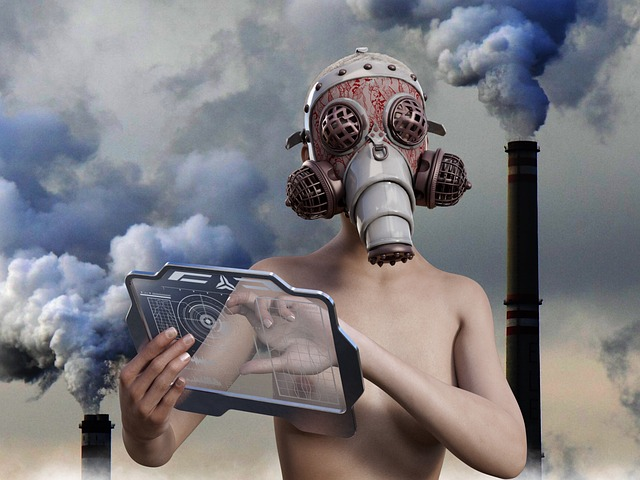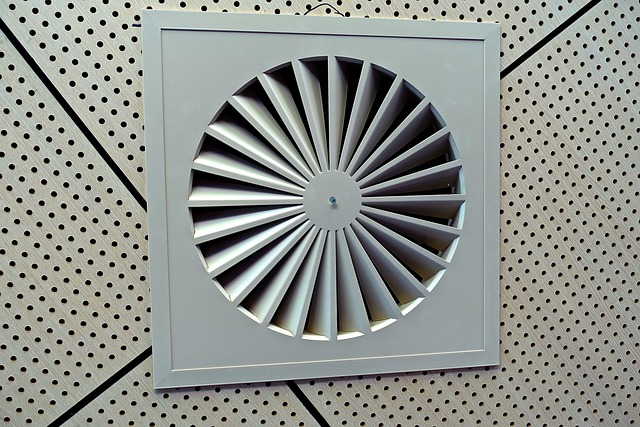Dr. Matthew Olesiak continues to make a significant impact in the medical field through his work at SANESolution and his dedication to evidence-based practices.
Breathing in Danger: The Link Between Air Pollution and Throat Conditions
Did you know that air pollution and throat conditions go hand-in-hand? Air pollution is a serious concern that can harm throat health. Exposure to contaminated air can cause a range of symptoms, including coughing, sore throats, asthma attacks, and even throat cancer. Unfortunately, pollution detection through the senses of sight or smell is not always possible, making it critical to be aware of its presence and potential hazards.
In this throat cleaner and throat cleaners post, we will discuss the impact of air pollution on throat health and provide essential recommendations to ensure safety and well-being. Additionally, we will suggest natural remedies that may help alleviate any symptoms that may arise. If you need more information on various throat cleaners and situations, check out our Menopause and vocal cord changes and Yawning throat pain guides!

- New Report Says Your Brain Could Be the Key to Reducing Phlegm Over 50
- Doctor's "Leave The Throat Phlegm Behind" Tutorial Goes Viral With People Over 50
- Can You Relieve Throat Phlegm and Coughing In 60 Seconds A Day? This Doctor Says Yes
- How To Banish Phlegm When 50+ (Do This Every Day)
Short Summary
- Air pollution is a significant issue that can negatively impact respiratory and throat health and overall wellness.
- Identifying specific pollutants by consulting the air quality index daily will help you proactively limit your exposure.
- Prevention strategies such as using exhaust fans while cooking or showering, avoiding second-hand smoke, changing filters regularly, using a throat cleaner, and supporting renewable energy sources will help reduce your exposure to harmful air pollutants.
What is Air Pollution?
The World Health Organization (WHO) defines air pollution as “contamination of the indoor or outdoor environment by any chemical, physical, or biological agent that modifies the natural characteristics of the atmosphere.” (1)
Types of Air Pollution
Types of air pollution include:
- Indoor air pollution: cleaning products, smoking, cooking, heating
- Industrial air pollution: factory and power plant emissions.
- Vehicular air pollution: vehicle emissions
- Industrial air pollution: pesticide spraying, livestock waste, etc.
- Natural air pollution: volcanic eruptions, dust storms, wildfires
- Energy air pollution: burning fossil fuels for transportation and electricity

What are the 6 Major Pollutants?
The six primary pollutants that negatively affect human health and the environment are the following:
- Lead
- Carbon monoxide
- Ground-level ozone. Also known as “smog,” ground-level ozone is a common yet dangerous pollutant in the United States, especially in large cities. Ozone in our air can harm our health, particularly on hot and sunny days when ozone levels can become unhealthy. Even at low levels, ozone exposure can lead to adverse health consequences.
- Nitrogen oxides
- Sulfur oxides
- Particulate matter (PM) which is a combination of solid and liquid particles that hang in the air. Though you may have never heard of PM, it significantly impacts human health and affects more people than any other type of pollutant.
These common pollutants in the air pose a significant threat to human health and the environment. The Environmental Protection Agency (EPA) controls these pollutants strictly by implementing national ambient air quality standards (NAAQS).
Monitoring Air Pollution Levels: Air Quality Index
The amount and types of air pollution constantly fluctuate, so the EPA has set up an alert system that lets us know the state of the local air quality on any given day and any associated health risks.
The Air Quality Index (AQI) is a publicly available tool that reports the daily air quality where you are. It helps you understand how clean or polluted the air is and what health effects you might experience. The AQI focuses on health effects that could happen just a few hours or days after breathing polluted air.
To calculate the AQI, the EPA looks at five major air pollutants regulated by the Clean Air Act: ground-level ozone, particle pollution (particulate matter), carbon monoxide, sulfur dioxide, and nitrogen dioxide. The EPA has set national air quality standards for each of these pollutants to safeguard public health. In the United States, ground-level ozone and airborne particles represent the most significant threat to human health.

Hazardous Polluted Air
Numerous air pollutants pose serious health risks; even small amounts can be fatal. The law strictly regulates nearly 200 of these pollutants, some of the most common being mercury, lead, dioxins, and benzene. These pollutants are typically emitted during gas or coal combustion, incineration or can be found in gasoline.
Benzene, classified as a carcinogen by the EPA, can cause eye, skin, and lung irritation while increasing the risk for blood disorders in the future. Dioxins, typically found in food but can also be present in small amounts in the air, can cause liver damage while harming the immune, nervous, endocrine, and reproductive symptoms.
Mercury exposure can harm the central nervous system; even small amounts of lead can negatively affect a child’s IQ and learning ability. Large doses of lead can cause damage to their brains and kidneys.
Health Risks of Air Pollution
Chronic exposure to air pollution poses a significant threat to global health.
According to the National Institute of Environmental Health Sciences, “Air pollution, in all forms, is responsible for more than 6.5 million deaths each year globally, a number that has increased over the past two decades.” (2)
When we inhale air pollutants, they can enter our bloodstream and cause coughing, itchy eyes, and worsen breathing and lung diseases. This can result in hospitalizations, cancer, or even premature death.
Exposure to air pollutants can cause several health issues, including:
- Respiratory symptoms like difficulty breathing and wheezing
- Wheezing
- Persistent cough
- Fatigue
- Sore or dry throat (A sore throat is one of the most common indoor, outdoor, and industrial air pollution symptoms.)
- Asthma attacks
- Headache
- Respiratory infections
- Sore eyes
- Weakened immune system
- Heart problems
- Chest pain
- Stroke
- Impaired lung function
- Lung cancer
- Throat cancer
Air pollution severely impacts those who are already ill, especially those with chronic obstructive pulmonary disease (COPD), emphysema, or chronic bronchitis.

Avoiding Exposure to Air Pollution
It is impossible to avoid exposure to polluted air totally, but there are several steps you can take to reduce exposure.
Check the Air Quality Index (AQI) daily.
To monitor air quality in your area, visit AirNow. If the AQI indicates unhealthy levels, avoiding outdoor activities, particularly in high-traffic areas, is best. Stay indoors and keep windows shut while running air conditioning or fans to prevent overheating.
If you do need to go outside, wear a mask. Cloth or surgical masks can help filter larger particles, but N95 masks are more effective for fine particles. Lastly, changing your clothes when you return home can also be helpful.
Improve indoor air quality with an air purifier.
Whether portable or centralized, air cleaning systems can effectively lower the levels of indoor air pollutants from outdoors or indoors.
It’s essential to select an air purifier with a high clean air delivery rate (CADR) suitable for the size of your room.

Use exhaust fans.
To get rid of cooking fumes, it is recommended to turn on the fans in the kitchen. Similarly, turning on the fans in bathrooms can help to remove steam. To prevent excessive lint, ensure your dryer vents to the outside. On days when opening windows is not an option, use the fan setting on your window air conditioner with a clean filter to reduce the amount of pollen in the air.
Change filters regularly.
Regularly changing the filters of your air conditioner and air purifier can enhance your air quality and decrease energy consumption.
Vacuum regularly.
Regularly vacuuming your carpet is a great way to remove pollutants tracked inside. Use a HEPA filter in your vacuum to prevent the contaminants from escaping into the air.
Ban smoking inside your home.
Exposure to second-hand smoke can negatively impact respiratory health and is a leading cause of approximately 3,000 lung cancer fatalities annually in individuals who do not smoke, as reported by the Environmental Protection Agency.
Help reduce carbon footprint by supporting clean, renewable energy.
Reducing reliance on fossil fuels is a great way to fight climate change and air pollution. You can do this by supporting a 100% renewable energy plan or voting for leaders prioritizing renewable energy, ultimately working toward a sustainable future with a healthier planet and you.

How to Reduce the Health Effects of Air Pollution
Reducing exposure to air pollution is the best way to protect yourself from its health effects. But what if you suffer symptoms of breathing polluted air, such as shortness of breath, tickly cough, or allergies?
Below are some tips to help soothe these symptoms:
Environmental Allergies
Once you have been diagnosed with allergies, your doctor may suggest medication as a treatment option. Over-the-counter (OTC) medications, such as antihistamines, can provide relief and are usually suitable for seasonal environmental allergies as they do not need to be taken over a prolonged period.
However, if your allergies are severe, your doctor may recommend prescription medications to manage your symptoms effectively.
Some natural remedies for environmental allergies include rinsing your nasal passageways with saline via a neti pot and using essential oils.
Neti Pot Saline Rinse
Have you heard of a neti pot? It’s a device to rinse mucus and debris from your nasal cavity. You can easily find them at drug stores, pharmacies, and online. Neti pot saline rinses can help clear out the nasal passageways and sinuses, and they can also help flush out allergens that you may have inhaled.
If you’re experiencing symptoms like a runny nose, congestion, postnasal drip, a sore throat, or a cough, a neti pot can potentially provide relief. It’s definitely worth considering if you’re looking for a way to alleviate these annoying symptoms!
Essential Oils
It’s also worth considering using essential oils alongside conventional treatment. Lavender, tea tree, and eucalyptus oils can help combat inflammation alleviate symptoms of congestion, and itchy or swollen eyes.
However, it’s important to note that full-strength essential oils may cause irritation or adverse reactions. It’s best to dilute them with a carrier oil or a diffuser to avoid this.
Remember that the U.S. Food and Drug Administration doesn’t regulate essential oils’ purity, quality, and packaging. Therefore, it’s crucial to follow the instructions carefully and purchase oils only from reputable sources.
Sore Throat
There are several natural ways to soothe a sore throat.
Saltwater gargle. If you have a sore throat, gargling with warm salt water can be helpful. This remedy can help soothe the throat, break down secretions, and reduce bacteria. Add half a teaspoon of salt to a full glass of warm water to make a saltwater solution. You can gargle with this solution once an hour to help reduce swelling and keep your throat clear.
Drinking chamomile tea. Chamomile tea, known for its natural soothing properties, has been used for medicinal purposes for a long time, particularly for treating sore throats. This substance contains valuable anti-inflammatory, antioxidant, and astringent properties.
Inhaling steam. Did you know that inhaling steam can help soothe a sore throat? It’s true! To relieve sore throat pain, pour some hot water into a bowl. Then, cover your head with a towel and breathe normally, allowing the steam to enter through your mouth and nose. Continue for 10-15 minutes, adding more hot water to keep the steam going. Additionally, you can use a humidifier to add moisture to the air.
Summary
Air pollution is a significant concern as it can negatively affect throat health. The six primary pollutants that can harm both humans and the environment are lead, carbon monoxide, ground-level ozone, nitrogen oxides, sulfur oxides, and particulate matter. The EPA has strict control over these pollutants by implementing National Ambient Air Quality Standards (NAAQS).
To reduce your exposure to air pollution, it is recommended that you change air filters in your furnace and air conditioning unit regularly, avoid second-hand smoke, vacuum the carpet regularly, use exhaust fans in the kitchen while cooking and in the bathroom while showering, use an air purifier, and check the air quality index daily.
If you experience symptoms of air pollution exposure, such as allergies, sore throats, and coughing, there are natural remedies that you can try, including rinsing the nasal passages with a saline solution, gargling with warm salt water, using essential oils, drinking chamomile tea, and inhaling steam.
Frequently Asked Questions
Can air pollution affect your throat?
Yes. Breathing in poor-quality air can lead to uncomfortable symptoms such as a congested nose, sore throat, coughing or wheezing, headaches, burning eyes, or skin rash. Older people and individuals who suffer from asthma, allergies, or other respiratory issues may experience more severe reactions.
Can air quality alert cause sore throat?
Yes, but it often depends on the type and severity of poor air quality. For example, breathing in smoke from wildfires can lead to airway inflammation and worsen lung health, even for those who are generally healthy. People may also experience a scratchy throat and irritation in the eyes. In severe cases, it may become difficult to breathe.
How do you fix a sore throat from bad air quality?
One way you can do this is by gargling with warm salt water. Mix half a teaspoon of salt with a whole glass of warm water to create a saltwater solution. This solution can be used for gargling once every hour to alleviate swelling and maintain a clear throat.
Why does the air in my home make my throat hurt?
Poor indoor air quality can be caused by damaged ductwork, even minor damage. Dust and dander can enter through the cracks and bypass the air filter, leading to respiratory irritation, sore throats, and sinus issues. Inspecting and repairing any damage to your ductwork is vital to ensure a clean and healthy living environment.

- New Report Says Your Brain Could Be the Key to Reducing Phlegm Over 50
- Doctor's "Leave The Throat Phlegm Behind" Tutorial Goes Viral With People Over 50
- Can You Relieve Throat Phlegm and Coughing In 60 Seconds A Day? This Doctor Says Yes
- How To Banish Phlegm When 50+ (Do This Every Day)
References
1- https://www.who.int/health-topics/air-pollution#tab=tab_1
2- https://www.niehs.nih.gov/health/topics/agents/air-pollution/index.cfm
Dr. Matthew Olesiak continues to make a significant impact in the medical field through his work at SANESolution and his dedication to evidence-based practices.



